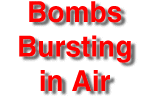|

An in-depth look at the Nationa Missile Defense
System
Page 2
|
  |
A “System of Systems”
NMD is actually a “system of systems:” a network of complex
elements ÐÐ radars, satellites, seeker-killer warheads ÐÐ
that must function as one system, with extreme speed and precision.
The Pentagon envisions a three-phase NMD to protect all
of the 50 United States:
Phase One
Assuming the U.S. gives the green light to NMD in 2003,
Phase One could become operational around 2006. It is designed to counter
a limited attack or accidental launch involving a few dozen ICBMs (the
exact number is classified), each carrying a single warhead using simple
“penetra- tion aids.” (Penetration aids, is Pentagon-ese for decoys,
chaff and other countermeasures to overcome defenses.)
Phase One would feature:
-
An initial 20 Ground-Based Interceptor rockets (GBIs) based
at a single site in central Alaska, with the gradual addition of 80 more.
-
Five Upgraded Early Warning Radars (UEWRs) in California,
Alaska, Massachusetts, Great Britain and Greenland.
-
An X-Band Radar facility in Alaska's Aleutian Islands.
-
Defense Support Program satellites, to be replaced by four
Space-Based InfraRed System (SBIRS) HIGH and six SBIRS-LOW satellites.
-
Three In Flight Communications Systems (IFCS): two in Alaska
and one in the eastern U.S.
-
Two Battle Management Command, Control and Communications
systems (BM/C3s), one at Cheyenne Mountain, Colorado; the other at the
Alaskan launch site.
·
NMD officials estimate the cost of Phase One at $40 billion.
Phase Two
The second phase would add two, possibly three, X-Band
radars in Alaska, California and a third site to be determined. Estimated
cost: $5 billion.
Phase Three
The third phase would expand NMD to handle some 50 ICBMs
with single warheads and simple penetration aids, or an estimated 25 single-warhead
ICBMs with sophisticated countermeasures. (Again, the precise numbers are
classified.)
Phase three would feature:
-
25 more GBIs at the Alaskan launch site and a second launch
site with 125 GBIs, possibly in North Dakota;
-
The original five UEWRs bolstered by five SBIRS HIGH and
24 SBIRS LOW satellites;
-
Three additional X-Band radars (at locations to be determined);
additional IFCSs and another BM/C3 at the second launch site.
Phase Three would cost an estimated $15 billion, bringing
total system costs (Phases 1-3)to $60 billion.
Back/Next |
